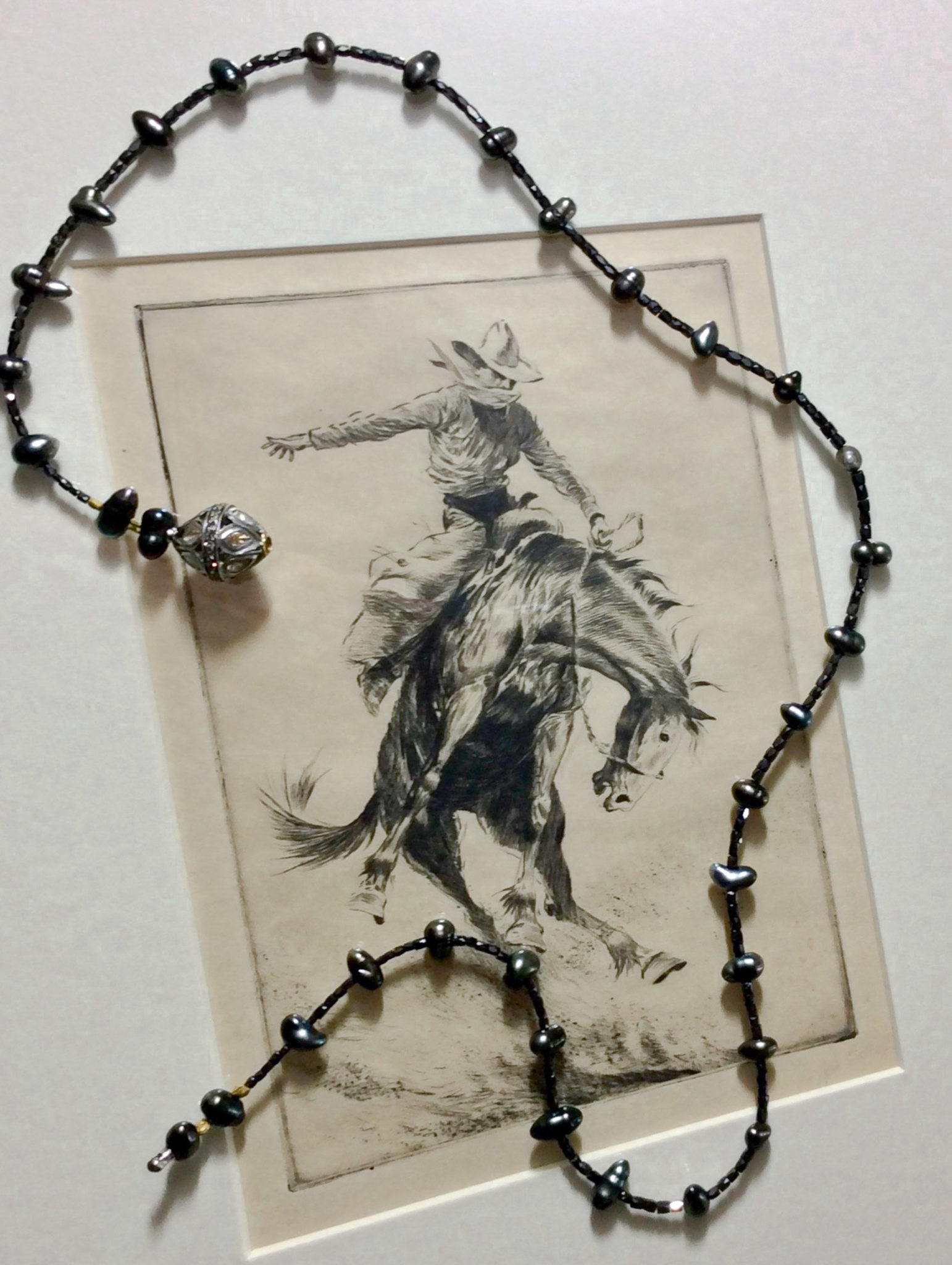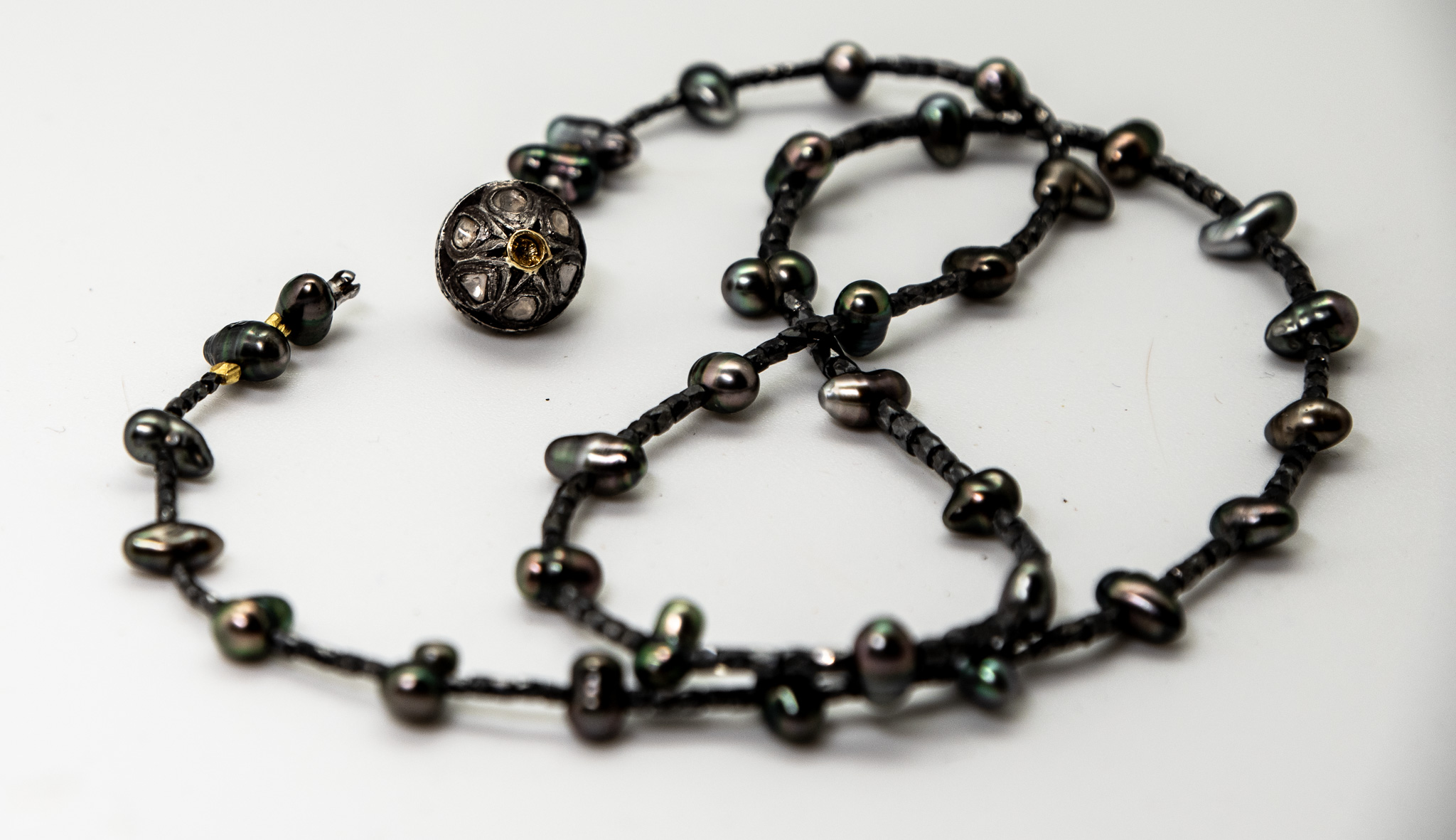Tahitian 'Keshi' Pearl & Faceted Black Diamond Bead Necklace
Luminous and dramatic, charcoal black Tahitian 'keshi' pearls, with overtones of green and magenta, punctuate a necklace of faceted black diamond beads that is the perfect complement for that little black dress or a crisp white shirt and jeans. The bento signature hidden clasp is fashioned from a sterling silver and 18K gold sliced diamond bead with just the right patina and sparkle to complement the pearls and diamonds. For a look that is at once dressy or casual, depending upon your mood, this is the perfect go-to necklace for almost any occasion. You will undoubtedly find yourself wearing it constantly.
designer: atelier bento
details:
- necklace length: 19 inches
- pearls: 36 Tahitian "Keshi" (solid nacre)
- pearls sizes: approximately 4mm x 6mm
- beads: 35 total carat weight faceted black diamonds
- black diamond bead treatment: heat
- silver & diamond bead source: India
- stringing material: 24K gold plated 19 strand coated wire
- gold: 18K
$1790
item: N 00015
availability: one-of-a-kind
CONTACT: 520-906-7187
about Tahitian pearls:
Exotic black pearls from the Pinctada margaritifera or black-lip pearl oyster, are more commonly known as Tahitian pearls. These pearls actually exhibit the widest spectrum of natural colors of any salt water pearl from almost black to peacock green, eggplant pistachio, silver, blue and sometimes almost white. Tahitian pearls are relative newcomers to the cultured pearl world, popularized only as early as the mid-1970's by the efforts of Jean Claude Brouillet, Salvador Assael, Robert Wan and others.
Unlike the classic light Japanese akoya pearl, Tahitian pearls are much larger (up to 20mm) and typically have a naturally dark body color. These pearls have become some of the most sought-after, expensive pearls in the world. Because of their vast color range, matching these pearls into a finished strand is an enormous task requiring thousands of loose pearls to create a single strand. Tahitian pearls are considered to be the second most valuable commercially farmed pearls in the world. Tahitian cultured pearls are bead-nucleated, but unlike akoya pearls, the nacre is typically very thick. The thinnest nacre allowed by French Polynesian law for export is 0.8 mm, which is a depth that would be considered, in the Akoya world, extremely thick.
about Keshi:
If a pearl is the champagne, then keshi are the bubbles. Keshi (ケシ, 芥子) means "poppy" in Japanese and is a perfect name for the naturally tiny poppy seed sized pearls of pure nacre that are the happy consolation prize of saltwater pearl culturing (some amazing single strands of Japanese Akoya keshi pearls can have over 1000 pearls!). Since keshi pearls are 100% nacre, they usually exude an incredibly lustrous shine. Most properly used to refer to the tiny seed pearls of the Japanese Akoya saltwater pearl oyster, Pinctada fucata martensii, the term has evolved to include pure nacre pearls from other saltwater pearl oysters as well. Some from Tahitian and South Sea pearls can be much larger than the Akoyas. (Keshi is never an appropriate term to use when referring to freshwater pearls, despite the fact that they are almost exclusively a pure nacre pearl) When you hear the term "keshi", make sure it is a salt-water pure nacre pearl.
YOU MAY ALSO LOVE:

Society (Islands) Girl
CONTACT: 520-906-7187








